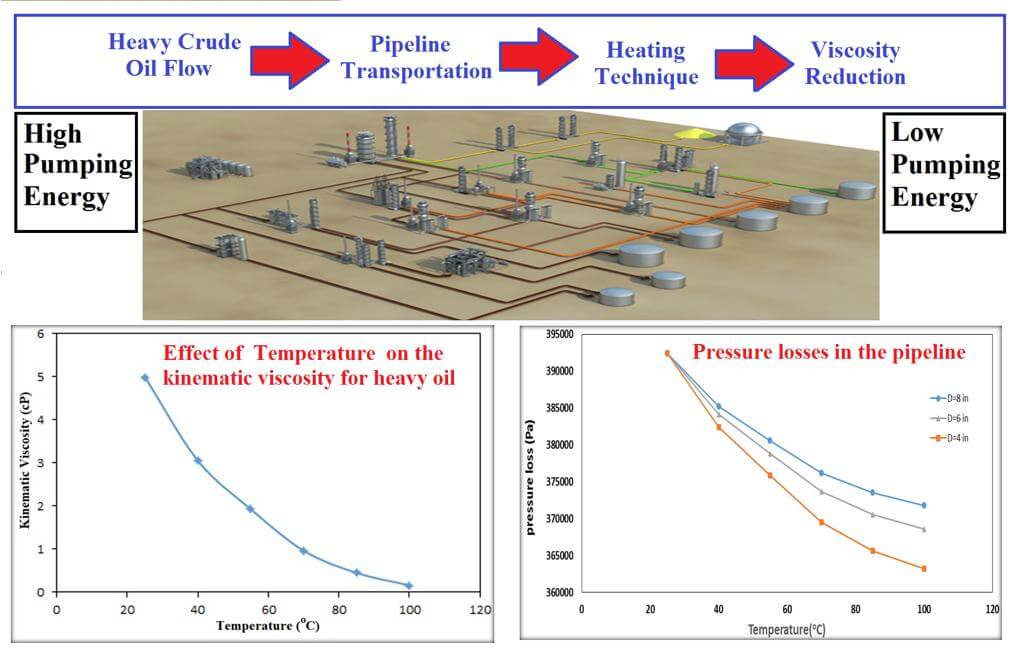 Open Access
Open Access
ARTICLE
Enhancing Heavy Crude Oil Flow in Pipelines through Heating-Induced Viscosity Reduction in the Petroleum Industry
1 Petroleum Technology Department, University of Technology-Iraq, Baghdad, Iraq
2 Department of Chemical Engineering, University of Technology-Iraq, Baghdad, Iraq
* Corresponding Author: Ramzy S. Hamied. Email:
(This article belongs to the Special Issue: Recent advancements in thermal fluid flow applications)
Fluid Dynamics & Materials Processing 2023, 19(8), 2027-2039. https://doi.org/10.32604/fdmp.2023.027312
Received 24 October 2022; Accepted 10 January 2023; Issue published 04 April 2023
Abstract
The process of transporting crude oil across pipelines is one of the most critical aspects of the midstream petroleum industry. In the present experimental work, the effect of temperature, pressure drop, and pipe diameter on the flow rate of heavy crude oil have been assessed. Moreover, the total discharge and energy losses have been evaluated in order to demonstrate the improvements potentially achievable by using solar heating method replacing pipe, and adjusting the value of the initial pressure difference. Crude oil of API = 20 has been used for the experiments, with the studied pipelines sections connecting the separator unit to the storage tank operating at a temperature of 25°C–100°C, pressure drop of 3, 4, 5, and 6 kg/cm2, and with pipe diameter of 4, 6, and 8 in. The results show that on increasing the temperature and/or the pressure drop, the flow rate through the pipeline becomes higher, thus raising the total pumping energy (as the pipe diameter increase), while energy losses increase from the last separator to the storage tank in the field. A pipe diameter increase can also produce a growth of the total pumping energy (i.e., energy losses increase). The results of the present analysis suggest that employing an optimal temperature (50°C) is needed to ensure good performance.Graphic Abstract

Keywords
Cite This Article
 Copyright © 2023 The Author(s). Published by Tech Science Press.
Copyright © 2023 The Author(s). Published by Tech Science Press.This work is licensed under a Creative Commons Attribution 4.0 International License , which permits unrestricted use, distribution, and reproduction in any medium, provided the original work is properly cited.


 Submit a Paper
Submit a Paper Propose a Special lssue
Propose a Special lssue View Full Text
View Full Text Download PDF
Download PDF Downloads
Downloads
 Citation Tools
Citation Tools